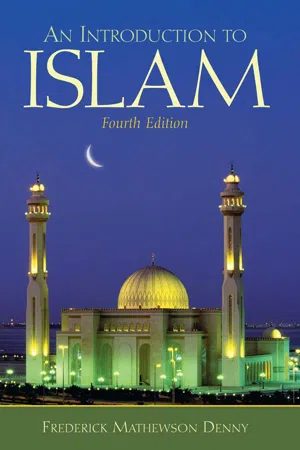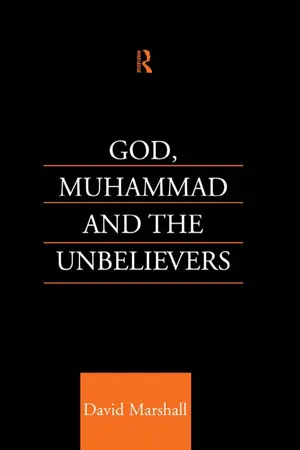History
Medinan Period
The Medinan Period refers to the time in Islamic history when the Prophet Muhammad and his followers migrated from Mecca to Medina in 622 CE. This period is significant for the establishment of the first Islamic state, the development of Islamic law, and the consolidation of the Muslim community. It marked a crucial turning point in the early history of Islam.
Written by Perlego with AI-assistance
Related key terms
3 Key excerpts on "Medinan Period"
- eBook - ePub
- Frederick Denny(Author)
- 2015(Publication Date)
- Routledge(Publisher)
anno hegirae, “year of the Hijra” 5) an enormous force of up to 10,000 men marched forth from Mecca in what was intended to be an Arabian Armageddon. The Medinans could muster only about 3,000 defenders, but a Persian convert suggested to Muhammad that they dig a large trench so as to withstand a long siege. The “Battle of the Trench” turned out to be a stalemate, because the Meccans—and the Arabs in general—did not have a tradition of siege warfare and did not like the long wait involved, preferring attack tactics and speedy, decisive outcomes, in part because of the lack of sufficient forage for their beasts. The Meccans finally retreated and went home after two weeks. The Jewish clan of Qurayza were found out to have been planning a rear attack with the Meccans, and so after the invaders had gone back home, the Jews were attacked in their Medinan stronghold. When the Jews surrendered, the men were executed and the women and children sold as slaves. But this sorrowful conclusion should not be interpreted as anti-Jewish, for it was essentially a response to behavior regarded as treason. The Constitution of Medina had clearly spelled out the Yathrib people’s defense responsibilities and the extent of mutual loyalty.Islam thus became firmly established, and Muhammad was recognized as the greatest single power broker in Arabia. Mecca’s prestige visibly waned after the Battle of the Trench. The details of Islamic religious and community life became established, as can be seen in the accumulation of Qur’anic passages that dealt more and more with ritual, legal, practical, and communal matters. This is the great difference between the Meccan period of Qur’anic revelation and the Medinan years. The former were concerned with the central issues of God’s nature and the relations between him and his creatures, with the coming judgment prominently featured. The stories of the ancient prophets were repeated in such a manner as to comment on Muhammad’s relations with a hostile Meccan environment. In Medina, however, the contents were more prosaic and practical. But it would be wrong to regard the Medinan revelations as less concerned with “religious” matters; the scope of what was Islamically religious simply had expanded as the project developed from a minority sect into a substantial new community, sometimes labeled a theocracy. From Medinan times, Islam was considered both dīn wa dawla, “religion and political order.”Mecca
In the spring of 628 c.e. Muhammad led a host of pilgrims to Mecca. The pre-Islamic Medinans were accustomed to participating in the Mecca pilgrimage, but this was the first time that the young Muslim community of Medina had attempted it. As usual the Medinans were prepared for battle but wished to enter Mecca peacefully. They were met by the Meccans at the gateway to the sacred precincts known as al-Hudaybiya. Muhammad then decided not to lead his people on the lesser pilgrimage (‘umra - eBook - ePub
- David Marshall(Author)
- 2014(Publication Date)
- Routledge(Publisher)
4 Medinan DevelopmentsIn the last chapter I analysed passages from the Meccan period (particularly the punishment-narratives) which threatened the unbelievers with the prospect of divine punishment in this world. This analysis threw considerable light on the believer–unbeliever relationship, as focused in Muhammad’s experience of being caught up in a triangular drama involving God, the unbelievers and himself. In this chapter I will continue the analysis through into the Medinan Period.Taking up the four headings under which I arranged the analysis of the passages from the middle and late Meccan periods, I will deal in this chapter, in successive sections, with the following questions. In the relevant Medinan passages:1. What becomes of the threat of a temporal divine punishment? 2. Does God continue to be conceived of as the sole agent of punishment? 3. What becomes of the punishment-narratives and the messengers of the past whom they portrayed? 4. Are there further indications of Muhammad’s turning away from the painful complexity of his relationship with the unbelievers towards the simplicity of God’s attitude to them?In the first section I will attempt to trace the chronological development of my theme through the Medinan Period. In doing so I will inevitably touch on material properly relating to the other questions; this first section of the chapter will thus be considerably longer than the others, but in order to be systematic I shall return to the other questions and summarize my findings in the subsequent sections. In the first section I will also appear at times to leave the issue of the believer–unbeliever relationship for some time in order to concentrate on how God punishes the unbelievers; the significance of this for the believer–unbeliever relationship will however emerge in due course. - eBook - ePub
The First Muslims
History and Memory
- Asma Afsaruddin(Author)
- 2013(Publication Date)
- Oneworld Publications(Publisher)
6In 622, the Prophet finally received divine permission to migrate himself to Yathrib, which upon his arrival was re-named Madinat al-nabi (“the City of the Prophet”), Medina for short. Two Companions in particular, Abu Bakr and ‘Ali, played a critical role in the hijra (“migration”), for which henceforth they would be gratefully inscribed in the collective memory of the polity. On the night of Muhammad’s departure, loyal ‘Ali slept in the Prophet’s bed as his decoy and fooled the pagan Meccans into thinking he had not yet left for Medina. Accompanying Muhammad on his perilous journey toward Medina was his stalwart friend Abu Bakr, who sojourned with him in a cave outside Mecca for two nights to avoid detection by the Meccans in pursuit of them, an event widely believed to be referred to in Qur’an 9:40. Years later, ‘Umar ibn al-Khattab, the second caliph, would recognize the cosmic significance of the hijra and declare 622 to be the first year of the new Islamic era.THE CONSTITUTION OF MEDINA
After moving to Medina, Muhammad drew up a document which detailed the relations primarily between the Muhajirun (Migrant Muslims from Mecca), the Ansar (lit. “helpers;” sc. the Medinan Muslims), and the Jews of Medina. The articles of this document, known in Arabic as Sahifat al-Madina (lit. “the Document of Medina,” or, as is more commonly translated into English, as “the Constitution of Medina”), have been preserved in an early biography of the Prophet composed by Ibn Ishaq (d. 767), available to us in the redaction made by his student Ibn Hisham (d. 833). This document is generally accepted by modern scholars as authentic and largely believed to have been drawn up sometime before the Battle of Badr in 624. Among the reasons adduced for its authenticity are its archaic language and the use of terminology, such as “believers” (al-mu’minun) rather than “Muslims” that is more common in the early Medinan Period. As Montgomery Watt has stated, “No later falsifier, writing under the Umayyads or ‘Abbasids, would have included non-Muslims in the ummah, would have retained the articles against Quraysh, and would have given Muhammad so insignificant a place.”7
Learn about this page
Index pages curate the most relevant extracts from our library of academic textbooks. They’ve been created using an in-house natural language model (NLM), each adding context and meaning to key research topics.


